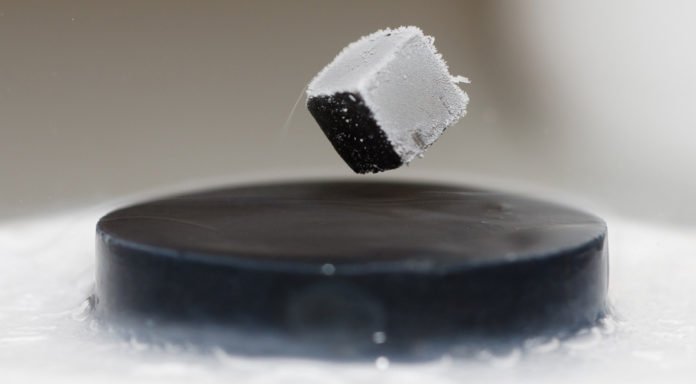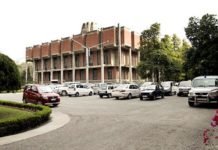For the first time, a Professor of the Department of Chemistry at the Indian Institute of Technology Kanpur (IIT-K) and his two research scholars have calculated superconductivity in the crystals of silver-gold alloys.
The calculated superconducting transition temperatures of the silver-gold alloys resulted in Tc (critical temperature) as low as one mK (milli Kelvin). The computational results do not support the experimental observations of room temperature superconductivity as claimed by Dev Kumar Thapa and Anshu Pandey in their popular preprint repository, arXiv:1807.08572 titled Evidence for Superconductivity at Ambient Temperature and Pressure in Nano structures. The nano structures are of silver particles embedded into a gold matrix.
Anshu Pandey is a professor at the Indian Institute of Sciences Bangalore (IISc) and Dev Kumar Thapais a research scholar. “We do not find signature of room temperature superconductivity in our calculations”, said Professor Dasari LVK Prasad.
Professor DLVK Prasad has worked on this project with his two doctoral students Surendra Singh and Subhamoy Char. Prasad’s team findings are also posted on the preprint arXiv:1812.09308, titled Ag-Au alloys BCS-like Superconductors?
Prompted by the Noble Prize–worthy claim (arXiv:1807.08572) by Thapa and
Pandey “on the evidence for superconductivity at ambient temperature and pressure in nano structures of silver particles embedded into a gold matrix” Professor Prasad and his two doctoral students Surender Singh and Subhamoy Char calculated superconducting transition temperatures in the silver-gold alloys. They did not find results that supporting Pandey’s observations. In fact, the results of Professor Prasad’s team rather complement with the observations of Ogale’s team (arXiv:1808.10699 titled Absence of superconductivity in pulsed laser deposited Au/Ag modulated nano structured thin films), where they did not observe any superconductivity in silver-gold modulated nano structured thin-films grown on Si Quartz substrates by pulsed laser deposition.
Satish chandra Ogale is a professor at the Indian Institute of Science Education and Research (IISER) Pune.
In the absence of well-defined crystal structures of silver-gold nanoalloys, Prasad’s team have meticulously predicted possible silver-gold alloys’ crystal structures, for which superconductivity has been investigated within the Bardeen–Cooper–Schrieffer (BCS) theory using the state-of-the-art supercomputing facility at IIT-Kanpur and their own in-house-house High-Performance Computing facility. To predict plausible stable and metastable crystal geometries, they have developed a somewhat quicker knowledge based approach (data-mining) coupled to evolutionary algorithms and first principles quantum mechanical calculations. Prasad indicated that the detailed results of the calculations will be presented in the upcoming American Physical Society (APS) March Meeting (2019), Boston, MA, USA.
Professor Prasad says, “At least in computations, within the BCS formalism, the silver-gold alloy systems are found to be very low Tc materials. Theoretical studies basedbased on non-BCS mechanisms are therefore extremely important in searching for the emergent superconducting state (if any) in these materials. Of course, further experimental works needs to be done.”
“Superconductors are materials that offer no resistance to electrical current. Prominent examples of superconductors include aluminium, niobium, magnesium diboride, cuprates such as yttrium barium copper oxide and ironpnictides. These materials only become superconducting at temperatures below a certain value, known as the critical temperature.”
“The technologies based on superconductors will translate into significant benefits to our life, our societies and economies across a broad range of endeavors. Superconductors offer the promise of important major advances in efficiency and performance in electric power generation, transmission and storage; medical instrumentation; wireless communications; computing; transportation and scientific instruments that will result in new paradigms and in societal advances that are cost effective and environmentally friendly.”(European Commission’s Priorities).













Outstanding research
Comments are closed.